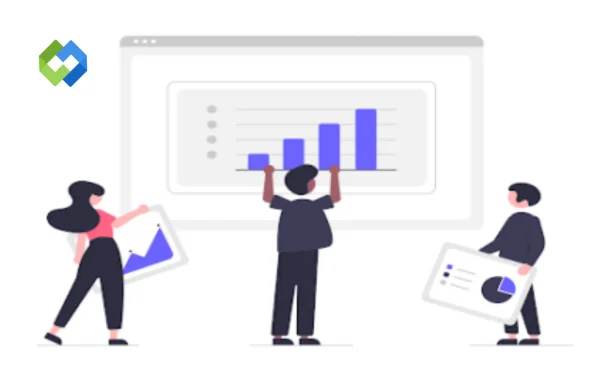That’s where data and structure come in. Today’s best designers mix creativity with systems that help them track, analyze, and adjust their work. Platforms now support this by giving creators ways to organize media, manage interactions, and view engagement analytics. By combining art with insight, these tools ensure that design isn’t just admired — it performs.
Table of Contents
Table of Contents
The Evolution of Design Thinking
Design isn’t just about making things look nice anymore. The way designers think and work has shifted with changes in tech and rising user expectations. What once was a visual craft has become a balance of creativity, usability, and measurable success.
From Print to Digital-First
In the print era, design was judged by originality and appearance — think magazine covers or posters meant to grab the eye. But digital platforms brought new rules. Designers now build for apps, websites, social feeds and mobile app development companies crafting experiences, not just images.
From Subjective Beauty to Measurable Outcomes
Today’s design questions aren’t just “Does it look good?” but also: ● Does it increase user engagement?
● Does it guide user behavior?
● Does it lead to clicks, conversions, or sign-ups?
Tools like analytics, heatmaps, and A/B testing provide real numbers to answer those questions.
Why Data Shapes Creative Decisions
Data has become a feedback loop for creative work. Metrics show what connects with people — and what doesn’t — so designers can adjust fast. Instead of relying only on gut feeling, modern creatives mix instinct with evidence to serve both the brand and its audience.
How Data Shapes Creative Success
Good design today is powered by more than imagination — it’s shaped by data. In the digital space, every decision can be tested, measured, and optimized for results.
Audience Insights as a Compass
Seeing how users interact with your content gives a clear direction. Click-through rates, dwell time, and engagement show not just what looks good, but what actually works. Designers using this info build visuals that connect with real people — not just assumptions.
Testing Measurable Results
Instead of guessing which layout or color works, A/B testing puts real options in front of users.
● One version might boost sign-ups by 20%.
● Another might keep people scrolling longer.
This turns design choices into strategy — not just creative experiments.
When Data Meets Design: Real-World Wins
Some of the strongest design work out there succeeds because it blends creativity with data. For example:
● Logos tested across platforms for brand recall
● UX layouts updated using heatmaps that show drop-offs
● Social graphics changed to improve shares and engagement
Tools That Bridge Creativity and Data
Strong design doesn’t stop at a good idea — it continues through testing and improving. For that, creatives need tools that reveal how their work performs and where to tweak for better results. That’s where data-backed platforms play a key role, turning design instincts into working systems.
Analytics as Creative Allies
Platforms that track user interaction and content performance are no longer just for marketers — they’re creative allies. They help designers see not just what was published, but how users reacted. That insight sharpens everything from visuals to messaging.
For example, OnlyMonster shows how modern tools can blend creativity and analytics. It gives content creators the ability to:
● Organize content in a structured, searchable system
● Track what content actually engages
● Adjust designs using real-time insights — not just assumptions This way, each creative decision is backed by data without losing the original artistic intent. When you combine creative instincts with structured feedback, the result is design that’s not just bold — it’s effective. Data doesn’t take away from creativity; it sharpens it. Designers can still make beautiful work, but now with confidence that it also delivers results.
The Designer’s Dilemma: Art vs. Data
The hardest part of modern design may be the belief that data limits creativity. Many designers fear that analytics will turn their work into a formula. But when used right, data doesn’t block creativity — it guides it.
The Fear of Losing Creative Freedom
It’s normal to be hesitant. Designers have always relied on imagination and originality. There’s a real concern that metrics might make everything feel “safe” instead of bold.
Data as a Guide, Not a Master
The trick is to use data as support, not control. Analytics can show which layouts drive clicks or which colors improve readability — but they don’t have to dictate the entire design. The vision still belongs to the designer.
Finding the Balance
Real creative success comes from blending gut feeling with feedback. ● Intuition drives new ideas, unique layouts, and powerful stories ● Data helps shape the execution, showing what engages and converts
Used together, the outcome is design that both inspires and performs.
The Future of Data-Enhanced Creativity
Design is entering a new era, shaped by both imagination and intelligent tools. With data and AI in the creative workflow, designers can move from reacting to proactively crafting what works — before it launches.
AI-Driven Insights and Predictive Analytics
AI can already study performance and predict what visuals will connect with users, including analyzing voice data to understand user sentiment and engagement. For example, it can suggest which layout might lead to more clicks before a campaign even goes live. That cuts down on trial and error, saving time for real creativity.
Personalization at Scale
Generic designs don’t work like they used to. Now, personalization — changing visuals and copy for different groups — is the future. Data helps show a different ad to a 20-year-old gamer than to a 45-year-old executive, without losing brand consistency.
The Rise of the Hybrid Designer
The top designers of tomorrow won’t just be artists — they’ll be creative analysts. These hybrid professionals will:
● Mix visual instincts with data skills
● Use AI tools to test and improve faster
● Build systems where every design is both expressive and strategic
Conclusion
Design today isn’t just about looking good — it’s about working smart. Data makes creativity sharper, more responsive, and more results-focused. Dedicated tools give designers what they need to track engagement, iterate with purpose, and stay in control of how their work performs.
The future belongs to those who combine imagination with insight — and create designs that are not only beautiful but also built to succeed.













